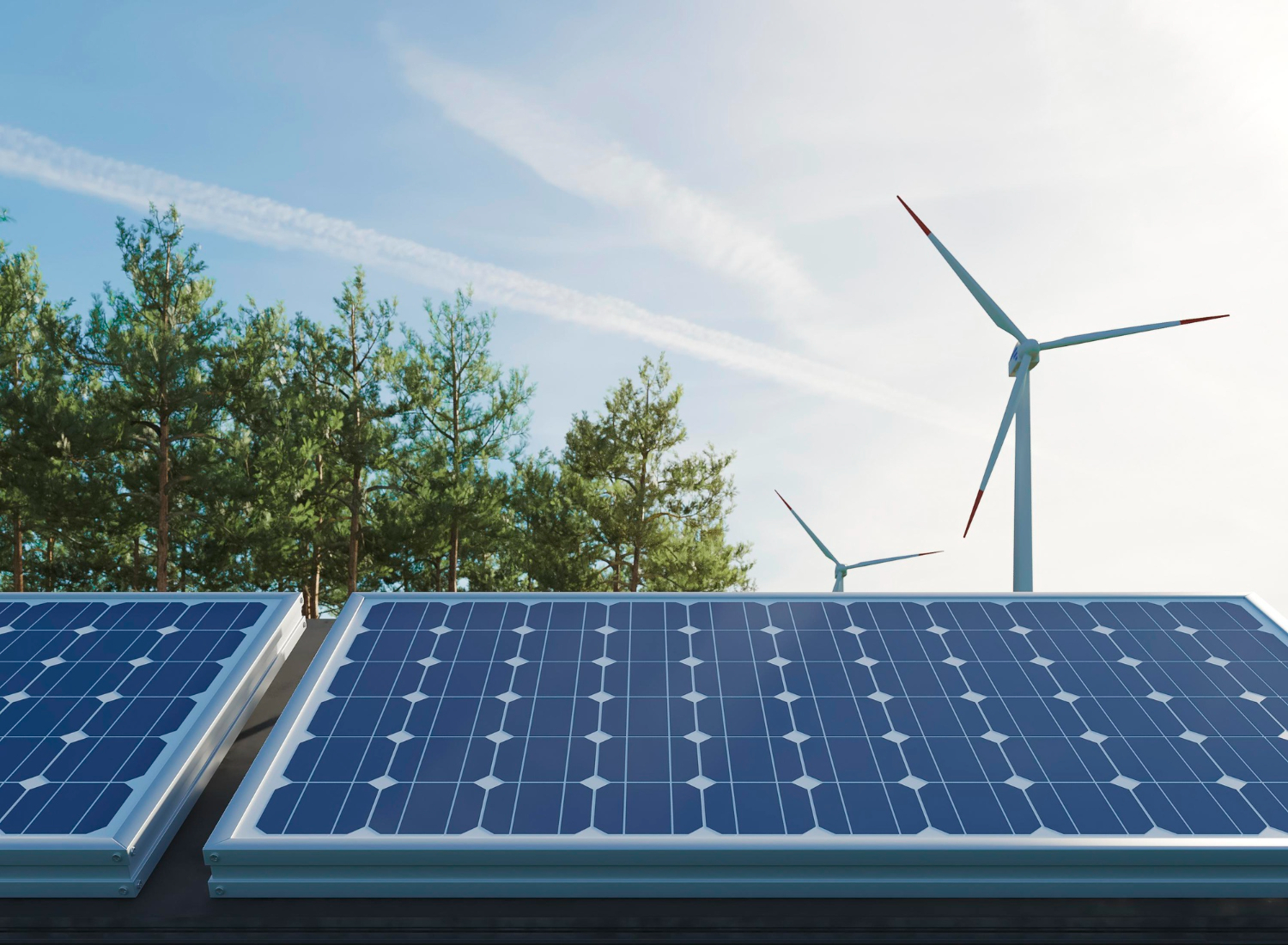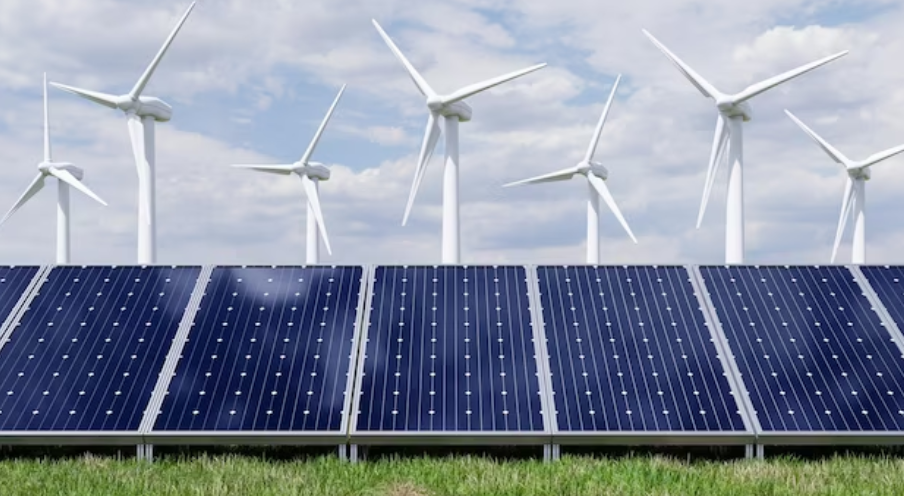MARKETING
How Does Solar Panel Technology Work?

There is no way around it. It is a new age, and the time of fossil fuels is fading. New technologies have come to light that is environmentally sustainable and economical.
That being said, renewable energy is approached by many with a measure of skepticism. How can it derive energy from the sun, wind, or waves without adding expense to our lives?
The answer is that renewable energy has become a better option financially, environmentally, and economically. But still, for some, this ongoing question remains: how does solar panel technology work?
Renewable energy does indeed arrive at a cost premium. But it will quickly pay for itself in saved energy costs and lower carbon dioxide emissions.
To learn more about how solar panels work, continue reading.
The Basics of Solar Panel Science
Using photovoltaic cells, solar panel technology is an energy conversion system that turns sunlight into electricity. Photovoltaic cells are made from a semiconductor material, like silicon. This substance takes energy from the sun’s rays and turns it into electricity.
The electricity that is made is then used to power homes, businesses, and other buildings that are not connected to the traditional electric grid. In the past few years, solar panel technology has grown by leaps and bounds as people have become more aware of the need to stop using energy sources that aren’t sustainable.
Types of Solar Panels
Solar panel options are monocrystalline, polycrystalline, and thin film. Monocrystalline solar panels are constructed from cells cut from a single pure silicon crystal and are known for their black appearance.
Polycrystalline, or multi-crystalline, solar panels are created by melting various pieces of pure silicon. Their mottled blue hue distinguishes them.
Thin-film solar panels are made through vacuum deposition methods, where thin layers of photovoltaic material are put one at a time onto a substrate. This type of solar panel is known for its flexibility and typically has a brown or purple hue.
Components of Solar Panels and Their Purposes
Solar panels are composed of various parts that work together to generate electricity. These parts include:
Solar Cells
Solar Cells are made up of positive and negative layers of semi-conductive material, typically silicon, separated by a small gap. When the sun’s rays strike a solar cell, the electrons are freed from their atomic bonds and flow from the negative layer to the positive layer, creating an electric current.
The electricity a solar cell can generate is directly proportional to the sunlight hitting it, so the more sun a solar panel gets, the more energy it can produce. Solar cells will use sunlight for most of their life cycles. However, they rely on other materials, such as silver, to transport the electricity from the source to the final destination.
Encapsulant
Encapsulant is an essential component of a solar panel. Its job is to keep water, dust, and other outside things from getting into the cells.
Encapsulant also helps to improve how well the panel works. It keeps the solar cells in place so that sunlight can be turned into electricity.
Encapsulants should be made of a solid material to protect the cells from moisture and physical shock. It must also be able to handle high and low temperatures. Because of this, high-grade ethylene vinyl acetate (EVA) is the most common material used in the industry for encapsulants.
Glass Cover
A glass cover is responsible for protecting the interior parts of the board, which are incredibly delicate. Made of tempered glass, the glass cover stands firm against the external environment and is shatterproof and weather resistant.
It also serves as a long-term insulation system that ensures the solar cells remain in top shape. Besides this, the glass cover is also strongly reflective and efficiently reflects any sunlight that comes in contact with it. As a result, it boosts the energy output of solar panels.
Frame
A frame is used to keep the solar cells from moving around. This structure also helps keep the whole structure stable and ensures it can handle mechanical loads.
In addition, the frame also makes it easy to put the edge in the right place. The shape and size of the frame are important because it needs to fit nicely on the top.
Most frames are made of aluminum or steel, but some have also been made of carbon fiber and fiberglass. The frame has many uses, but it is essential because it protects fragile solar cells and ensures the system works at its best.
Backsheet
A solar panel’s back sheet is another important part. It is the layer that is right behind the cells that turn sunlight into electricity.
If the solar panel didn’t have a back sheet, the cells would be exposed to the elements, which could cause corrosion, temperature changes, and other problems. The back sheet also acts as a barrier to electrical current so that it doesn’t flow across the solar panel and cause possible harm.
Back sheets are usually made of a thin PET and fluoropolymer film. They also have UV protectants to keep the cells from getting old or breaking down. Backsheets can sometimes be of different colors to protect the panel from lousy lighting.
Bus Bars
Bus bars help link the cells together. Most of the time, they are made of aluminum and move electricity from the solar cells to the inverters and other load centers.
Bus bars handle high voltages and currents, so they are insulated. Solid electrical connections are made by soldering and crimping the cells, bus bars, and inverters. The large, thick bars have a lot of surface area, which helps the connection points get rid of heat.
Junction Box
A junction box connects the solar panel, the inverter, and any other electrical systems. Junction boxes protect the solar panel system’s wiring and circuits by putting them in a waterproof and weatherproof box. This makes it less likely that water or other outside factors will cause short circuits or other problems.
They also make it easy to put together and keep up the solar panel system. The junction box also makes it easy to check on and change the output of the solar panel system. By putting sensors and metering units on the system, you can track how much energy it makes.
Inverter
Inverters take the electricity made by solar panels and change it from direct current (DC) to alternating current (AC), the kind of electricity we use in our homes and businesses. This change makes it easier to store and use the electricity that comes from solar panels.
Without an inverter, we can’t use the DC electricity from solar panels. Instead, we’d have to use more expensive and complicated systems to convert it.

The Benefits of Solar Panels
Solar panel technology offers many environmental and economic advantages.
Clean Energy
Clean energy is a source of electricity that is good for the environment and rarely runs out. It is mainly made from renewable sources like wind, sun, biomass, and geothermal energy. Solar panel technology has some benefits, and clean energy is one of them.
Solar energy is free, can be used repeatedly, doesn’t pollute or make harmful byproducts, and can be used even when other sources aren’t available. The light from the sun is turned into photovoltaic energy and then into electricity by solar panels.
This solar energy is very efficient, saves money, and doesn’t cause any pollution. As energy prices keep rising, clean energy from solar panels looks more and more appealing.
Reduced Energy Costs
Since solar energy is free and can be used repeatedly, using solar panels to make electricity helps lower energy costs. Solar energy can be used to power lights, appliances, and other electronic devices, among other things.
Replacing traditional power sources with solar panels can significantly reduce energy costs.
Improved Energy Independence
Solar panels are a reliable, renewable energy source. It gives you more energy and independence. Solar panels can make electricity in many places, even when there isn’t much light. This makes it easier for people to switch to this clean and cheap energy source.
Energy users can stop relying on traditional energy sources if they use solar energy. This makes energy independence a real possibility. As more and more people switch to solar energy, it becomes more and more possible to have better energy independence and more control over your power.
Increased Property Value
Homeowners who install solar panels benefit from increasing their property value. Solar energy is now seen as a valuable asset in real estate.
People who install solar panels on their property often find that their property value increases by about 4%. This is a great advantage for homeowners looking to sell their property, as it gives them more money to invest in other projects or investments.
Low Maintenance
Solar panel technology can use photovoltaic cells to turn the energy from the sun into an electric current. Solar panels are relatively inexpensive and don’t need much if any, maintenance once they’re set up.
Solar panel systems can provide reliable electricity for decades with little maintenance if they are set up and kept in good shape. Also, if parts need to be replaced, you can easily find them at most hardware stores.

The Cost of Solar Panel Technology
Home solar panels allow you to harness natural solar energy and turn it into electricity, saving money on your electricity bills and reducing the carbon footprint of your home.
Unfortunately, installing home solar panels is costly, with the average installation costing between $15,000 and $40,000, depending on the size and power of the home solar panel system.
System Number and Size
Since solar panels come in different sizes and can hold different amounts of power, smaller systems usually cost less than larger ones. The size of the system determines how much energy it can have. Since more extensive systems make more power and cost more, they are more efficient.
In general, the more complicated the installation process is and the bigger the system, the more it costs. Lastly, the number of panels needed to make the design can also affect the installation cost. More panels will make the total cost go up.
Panel Efficiency
More efficient solar panels can make more energy from the same amount of sunlight, which will lower the overall price of home solar panels. Higher levels of efficiency also cut costs related to setting up the system, like the need for more panels and infrastructure.
Also, high-efficiency panels need less space to be installed, which cuts down on the cost of the area you would have otherwise required. The efficiency of solar panels is a critical factor in figuring out how much they cost, which directly affects how much the whole system costs.
Installation Costs
Installing a solar system for a home involves not only the equipment cost but also the labor cost to get the systems up and running. Professional solar installation companies can often provide an accurate price estimate for the installation costs.
Still, these estimates can vary widely depending on the location, climate, and other specific project details. If you want to go now and find the lowest costs of solar panel options in your area, click here.
Go Solar Today
Solar panel technology is revolutionizing the way we think about energy production. As more people become aware of the advantages of solar energy, its efficient and cost-effective capabilities make it a great alternative to traditional energy sources.
By making the switch, we can help reduce emissions and do our part to live sustainably. Join the movement for clean energy today. Invest in solar-powered energy solutions for your home or business.
Was this article helpful to you? If so, check out our blog for more helpful information and resources.










